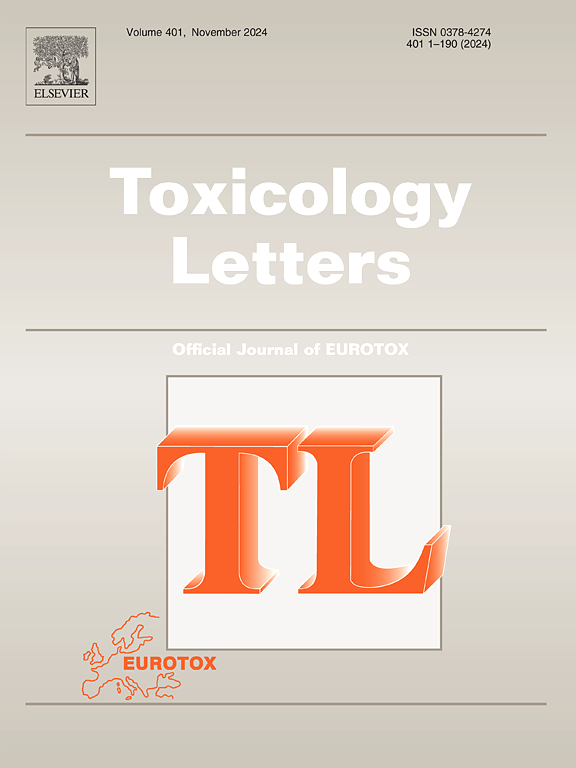Risk assessment for the bladder carcinogenesis of 4-aminobiphenyl in smokers: A source-to-outcome study
IF 2.9
3区 医学
Q2 TOXICOLOGY
引用次数: 0
Abstract
4-aminobiphenyl (4-ABP) is widely distributed in the environment and is implicated in the pathogenesis of cancer. This study aims to clarify the environmental and toxicological science of 4-ABP, which are currently unexplored. By searching articles from PubMed, Web of Science, and MEDLINE, we established an aggregate exposure pathway (AEP) framework that demonstrated the presence of 4-ABP in the cigarette smoke. Compared to nonsmokers, smokers had relatively higher levels of 4-ABP and its adducts in blood, urine, and bladder tissues. Then, an adverse outcome pathway (AOP) was constructed using bioinformatic tools. The AOP indicated that 4-ABP induced DNA damage, cell cycle dysregulation, and angiogenesis in the development of bladder cancer. In vitro assays confirmed that 4-ABP/cigarette smoke extract (CSE) significantly induced DNA double strand breaks and cell cycle arrest in the S phase in bladder cancer cells (J82), and 4-ABP/CSE-treated J82 cells promoted the migration and tube formation ability of human umbilical vein endothelial cells (HUVECs) in a dose-dependent manner. The benchmark dose (BMD) analysis revealed that the 5th lower limit of BMD at a 5 % response (BMDL5) derived from angiogenesis was 0.02 mM, and the corresponding human equivalent dose derived from BMDL5 was 0.44 μg/kg/day. Our study demonstrated that 4-ABP induced bladder cancer via promoting angiogenesis in smokers, which may provide a new approach for chemical risk assessment regarding bladder carcinogenesis.
4-氨基联苯对吸烟者膀胱癌发生的风险评估:一项来源到结果的研究
4-氨基联苯(4-ABP)广泛存在于环境中,与癌症的发病机制有关。本研究旨在阐明目前尚未探索的4-ABP的环境和毒理学科学。通过检索PubMed、Web of Science和MEDLINE的文章,我们建立了一个总体暴露途径(AEP)框架,证明了香烟烟雾中存在4-ABP。与不吸烟者相比,吸烟者的血液、尿液和膀胱组织中4-ABP及其加合物的含量相对较高。然后,利用生物信息学工具构建了不良结果通路(AOP)。AOP表明,4-ABP在膀胱癌的发展过程中诱导DNA损伤、细胞周期失调和血管生成。体外实验证实,4-ABP/香烟烟雾提取物(CSE)显著诱导膀胱癌细胞(J82)的DNA双链断裂和细胞周期阻滞在S期,4-ABP/CSE处理的J82细胞促进了人脐静脉内皮细胞(HUVECs)的迁移和成管能力,且呈剂量依赖性。基准剂量(BMD)分析显示,血管生成的5 %应答(BMDL5)的第5下限BMD为0.02 mM,相应的人体等效剂量为0.44 μg/kg/d。我们的研究表明,4-ABP通过促进吸烟者血管生成诱导膀胱癌,这可能为膀胱癌化学风险评估提供新的途径。
本文章由计算机程序翻译,如有差异,请以英文原文为准。
求助全文
约1分钟内获得全文
求助全文
来源期刊

Toxicology letters
医学-毒理学
CiteScore
7.10
自引率
2.90%
发文量
897
审稿时长
33 days
期刊介绍:
An international journal for the rapid publication of novel reports on a range of aspects of toxicology, especially mechanisms of toxicity.
 求助内容:
求助内容: 应助结果提醒方式:
应助结果提醒方式:


